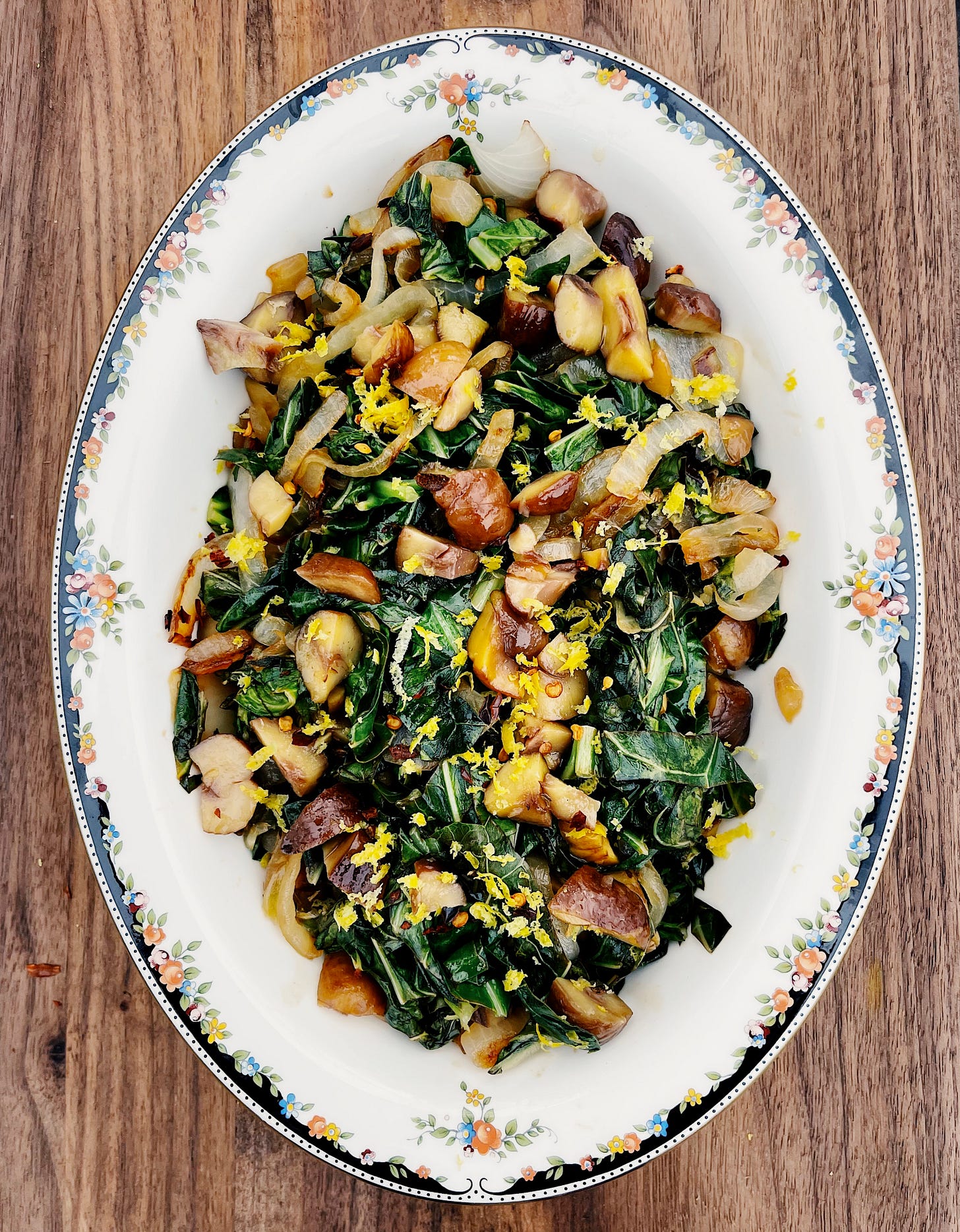You probably already know that greens are good for the brain. Eating leafy greens has been well-documented to slow down brain aging, protect memory, and reduce dementia risk. But did you know some leafies are more nutrient-dense that others? And, that it’s important to consume a certain “dose” to reduce the risk of cognitive decline with age?
Handfuls of herbs provide the leafy greens in my Sardinian Lentil Soup, pictured.
Green leafy vegetables make up one of the 10 brain-health food groups in the MIND diet study.
In this landmark study, following the eating guidelines closely resulted in 53% reduced risk of Alzheimer’s in the coming years. MIND diet researchers singled out green leafy vegetables as its own brain-smart food group because there was already ample evidence of its neuroprotective powers.
In one study using MRI brain imaging, those who ate at least 1 cup greens per day had younger looking brains—11 years younger—than those who rarely ate greens. The leafy green eaters were able to maintain a robust brain volume with age rather than show signs of atrophy. That’s probably because greens provide key brain health nutrients, such as vitamin K, carotenoids (lutein and zeaxanthin), and folate.
The recommended dose
Based on this and other studies, the MIND diet researchers came up with this serving size for leafy greens: 1 cup raw or ½ cup cooked 6 out of 7 days per week.
I recommend an even more generous serving of leafy greens to boost not only nutrients but fiber: 2 heaping cups raw (in a salad) or 1 cup cooked (such as sautéed spinach or chard) each day.
Some leafy greens are better than others
A good rule of thumb: the darker the green, the more nutrients in each bite. Spinach, for example, is at the top of the heap when it comes to calcium, carotenoids, vitamin K, and folate. Collard greens are a close second, followed by kale, Swiss chard, and watercress.
Of the lettuces, choose arugula or Romaine over iceberg. All the tender greens, such as butter, Bibb, mizuna, and little Gem, deserve a spot in your salad bowl, too. In my book, I have a whole chapter for Leafy Greens with its own food pyramid to help you choose the best ones.
Variety is key when choosing leafy greens
Mix up your leafy green intake by always trying new varieties. This ensures you get all the phytonutrients they provide while helping you cultivate a diverse and vibrant gut microbiome.
Don’t let your leafy green intake slide because it’s winter
Are you ready for the first installment of Brain Health Homework? (This is a regular feature of the newsletter. I’ll be checking in a few times each month to help you adopt a new brain health habit, or build on one you already have.)
Enjoy leafy greens every day. The dose: 2 cups (raw) or 1 cup (cooked).
When boosting green intake, it helps to think beyond the salad bowl. Here are 5 tips:
Think side dish not salad for these dark leafies: collard greens, kale, Swiss chard, and spinach. Sauté briefly in a pan on medium-low with extra-virgin olive oil. Season with flaky salt, a pinch of red pepper flakes, and a squeeze of lemon. For a slightly fancier preparation, here’s a bonus recipe: Roman-Inspired Collards with Chestnuts.
Herbs like parsley, basil, and mint are leafy greens, too. Now is the time to get out that pesto you froze from last summer, or make a batch from supermarket herbs. Or, make this Sardinian lentil soup.
Look for loose-leaf kale and spinach in the frozen food section of the grocery store. Add a few handfuls to soups and stews, like this pasta e fagioli.
Microgreens are amazing! They provide up to 40 times more nutrients than their mature forms. Find them in the produce section or grow your own.
Love a green smoothie? Go for it. Just be sure to also eat your leafy greens raw or cooked, too, so the fiber sticks around in your gastrointestinal system longer.
How are you working leafy greens into your meals this winter? I would love to know! Please share in the comments section below.
I’ll be back on Friday with some new information about the MIND diet study.
Love,
Annie






Annie - I am loving this weekly information you are sharing with subscribers already! I sauté a large tub of spinach & power green mix in olive oil on Sunday & store it in fridge. Then I add about 1/2 cup to my omelette or lunch bowls that I make throughout the week. Great to know the recommended quantities and the benefits of parsley, herbs & microgreens. I will work on adding more of those into my meals as well. As always, thank you for doing all the research, so we can benefit from the best and most up-to-date information. Happy Holidays! Marie
My favorite source of leafy greens in winter is our local Asian market where fresh baby bok choy, water spinach and snow peas as well as fresh basil, mint, and green onions are always available. There have many other greens that are new to me, but should be fun to get to know.